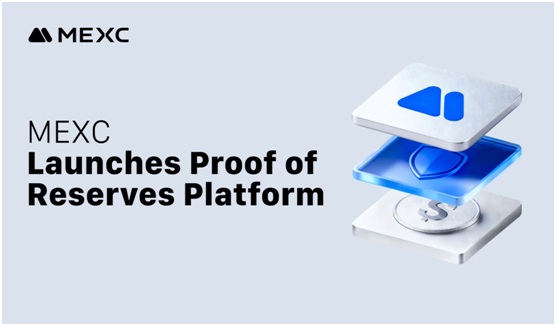Getting your message out there in the financial world can feel like a puzzle sometimes, right? With so much going on – new tech, changing rules, and everyone trying to grab attention – it’s easy to get lost. That’s why having a solid plan for how you talk to people, especially through financial services PR, is super important. It’s not just about sending out press releases anymore; it’s about telling your story in a way that makes sense and builds trust. We’ll look at some ways to make sure your financial firm stands out and connects with the right folks in 2025.
Key Takeaways
- Telling your firm’s story in a clear and interesting way is key to connecting with different kinds of people, from clients to investors.
- Being open and honest in your communications helps build the trust that’s so important in the money world.
- Using digital tools and watching what the data says can help you reach the right people with the right message at the right time.
- Building good relationships with reporters and sharing your knowledge through content can make your firm look more credible.
- Having a plan for tough times and sticking to honest communication helps keep clients confident, even when things get bumpy.
Elevating Financial Services PR Through Strategic Storytelling
In the fast-paced world of financial services, just having a good product or service isn’t enough. You’ve got to tell people about it in a way that makes sense and builds trust. That’s where strategic storytelling comes in. It’s about more than just putting out press releases; it’s about crafting a narrative that connects with your audience on a deeper level. Think about it – people want to know who you are, what you stand for, and why they should care. A well-told story can make complex financial ideas understandable and relatable, turning potential clients into loyal customers.
Crafting Compelling Narratives for Diverse Audiences
Financial services aren’t one-size-fits-all, and neither should your stories be. You’re likely talking to different groups – maybe individual investors, institutional clients, or even potential employees. Each group has its own concerns and interests. So, you need to tailor your message. For individual investors, a story might focus on how your firm helps them achieve personal financial goals, like saving for retirement or buying a home. For institutional clients, the narrative might highlight your firm’s market insights, risk management capabilities, and track record. It’s about speaking their language and addressing their specific needs.
- Identify your target audience segments. Who are you trying to reach?
- Understand their pain points and aspirations. What problems do they need solved? What do they hope to achieve?
- Develop distinct story angles. Create narratives that directly address the needs and interests of each segment.
- Use clear, accessible language. Avoid jargon that might confuse or alienate your audience.
The Art of Transparent Communication in Finance
Let’s be honest, finance can sometimes feel a bit opaque. That’s why transparency is so important. When you’re open and honest about your practices, your fees, and your performance, you build a foundation of trust. This doesn’t mean you have to share every single detail, but being upfront about the important stuff goes a long way. It shows you have nothing to hide and that you’re committed to acting in your clients’ best interests. This kind of openness can be a real differentiator in a crowded market.
In financial services, trust is the currency. Without it, even the most innovative products or services will struggle to gain traction. Transparent communication isn’t just good practice; it’s a strategic imperative for building lasting relationships and a solid reputation.
Building Trust Through Authentic Brand Messaging
Authenticity is key. People can spot a fake from a mile away. Your brand messaging needs to reflect who you genuinely are as a company. What are your core values? What drives your team? When your messaging is authentic, it feels real and believable. This means your stories should align with your actions. If you talk about client-centricity, make sure your client service actually reflects that. Authentic messaging creates a consistent and reliable brand image that fosters genuine connections with your audience. It’s about being true to yourself and letting that shine through in every communication.
Here’s a quick look at what makes messaging authentic:
- Alignment with Values: Does the message reflect the company’s stated principles?
- Consistency: Is the message consistent across all platforms and communications?
- Honesty: Is the message truthful and free from exaggeration?
- Empathy: Does the message show an understanding of the audience’s perspective?
Navigating the Evolving Landscape of Financial Public Relations
The world of financial public relations isn’t what it used to be. Things are changing fast, and if you’re not keeping up, you’re going to get left behind. It’s not just about sending out press releases anymore; it’s about being smart, quick, and really connected. Financial firms need to be agile to stay relevant and trusted.
Adapting PR Strategies for Digital Transformation
Look, digital is everywhere. For financial services, this means your PR needs to be online, all the time. We’re talking about websites, social media, online news, and even how search engines see you. It’s a whole new ballgame. You can’t just rely on the old newspaper clipping anymore. Think about how people find information now – it’s usually a quick search or a scroll through their feed. Your firm’s story needs to be there, ready to be found, and it needs to make sense in that fast-paced digital environment.
Leveraging Data Analytics for Targeted Campaigns
This is where things get interesting. We’re not just guessing anymore. We can actually look at data to see what’s working and what’s not. Think about it: who is reading your content? What are they saying about your firm online? Are your messages hitting the right people? Data analytics can tell you all of this. It helps you figure out who to talk to, what to say, and when to say it. This means your PR efforts are more focused and, honestly, a lot more effective. It’s like having a map instead of just wandering around.
Here’s a quick look at what data can help you track:
- Media Mentions: How often is your firm being talked about?
- Sentiment Analysis: Are people saying good things or bad things?
- Audience Engagement: Are people interacting with your content (likes, shares, comments)?
- Website Traffic: Is your PR driving people to your site?
Staying Ahead of Industry Trends and Regulatory Shifts
Finance is a tricky business, and the rules can change on a dime. Plus, there are always new trends popping up, like new investment products or shifts in the market. Your PR strategy needs to be flexible enough to handle this. You have to know what’s happening in the industry and with regulations so you don’t accidentally say the wrong thing or miss a big opportunity. It means staying informed, talking to the right people, and being ready to adjust your message quickly. It’s a constant learning process.
The financial world moves at a breakneck pace. What was relevant yesterday might be old news today. Public relations professionals in this sector must be constantly vigilant, anticipating shifts in market sentiment, regulatory landscapes, and technological advancements. This proactive stance is key to maintaining a firm’s reputation and ensuring its message remains pertinent and impactful.
Building Credibility and Thought Leadership in Finance

In the financial world, trust isn’t just a nice-to-have; it’s the bedrock of everything. Building that trust and showing you know your stuff, that’s where credibility and thought leadership come in. It’s about more than just putting out press releases; it’s about consistently showing up as a reliable source of information and insight. This means being smart about how you talk to people, both inside and outside your company.
Cultivating Strong Media and Press Relationships
Think of journalists and media outlets as gatekeepers to a much wider audience. You can’t just expect them to cover your company because you exist. You need to build actual relationships. This involves understanding what they cover, what makes a good story for them, and being a helpful, responsive source. It’s a two-way street. When you can provide them with timely, accurate information and expert commentary, they’re more likely to turn to you when they need it. This doesn’t happen overnight; it takes consistent effort and a genuine willingness to be helpful.
Here’s a quick look at what goes into building those connections:
- Know Your Target: Research the journalists and publications that cover your specific niche in finance. Don’t pitch a crypto story to a reporter who only covers mortgages.
- Be a Resource: Offer yourself as an expert source for their stories. Be prepared to provide quotes, data, or background information, even if it doesn’t directly promote your company.
- Timeliness is Key: Respond quickly to media inquiries. If a reporter needs a comment by end of day, don’t get back to them the next morning.
- Respect Their Time: Keep your pitches concise and to the point. Clearly state why your story is relevant to their audience.
The Power of Content Marketing in Financial PR
Content marketing is basically creating and sharing useful stuff – like blog posts, articles, videos, or podcasts – that attracts and keeps people interested in your company. For financial firms, this is a goldmine for showing what you know. Instead of just saying you’re smart, you can show it by explaining complex financial topics in a way that’s easy to understand. This builds confidence in your brand. It’s about providing real value, not just selling.
Consider this:
When you consistently put out high-quality content that addresses the real questions and concerns of your target audience, you naturally position yourself as a go-to authority. This isn’t about shouting the loudest; it’s about being the most helpful and insightful.
Establishing Authority Through Expert Insights
This is where you really shine. It’s about making sure the right people see you as an expert. This can be through speaking at industry events, publishing research papers, or even just sharing your informed opinions on social media. The goal is to be recognized for your deep knowledge and unique perspective. When people see you consistently offering smart takes on market trends, regulatory changes, or investment strategies, they start to see you as a leader. It’s about being more than just a service provider; it’s about being a trusted advisor.
Here’s a breakdown of how to get there:
- Identify Your Niche: What specific area of finance do you or your firm excel in? Focus your insights there.
- Share Your Knowledge: Don’t hoard your expertise. Write articles, give webinars, participate in panel discussions.
- Be Consistent: Thought leadership isn’t a one-off event. It requires ongoing effort to maintain your position.
- Engage with Peers: Participate in industry conversations, comment on others’ work, and build a network of fellow experts.
Strategic Partnerships in Financial Services PR

In the fast-paced world of financial services, going it alone with your public relations just doesn’t cut it anymore. You need allies. Think of it like building a solid investment portfolio – diversification is key, and that applies to your PR strategy too. Partnering up with the right people can seriously change the game for your firm.
Choosing the Right Communications Partner
So, how do you pick the right PR agency or consultant? It’s not just about finding someone who knows how to write a press release. You need a partner who really gets the financial world. They should understand the jargon, the regulations, and the general vibe of the industry. Look for a firm with a solid track record, especially with companies similar to yours. Did they help a wealth management firm boost its client base? Or maybe they steered an investment fund through a tricky market announcement? That’s the kind of experience you want.
- Industry Specialization: Do they focus on financial services, or are they a generalist agency trying to cover everything?
- Proven Results: Can they show you examples of successful campaigns and positive media coverage they’ve secured?
- Cultural Fit: Do their values and working style align with your firm’s culture?
- Scalability: Can they handle your needs now and grow with you as your firm expands?
The best PR partners don’t just execute tasks; they act as an extension of your team, offering strategic advice and anticipating potential challenges.
Collaborating with Financial Media Strategists
Media strategists are the folks who know which journalists are looking for what stories, when they’re looking, and how to pitch them effectively. They’re the gatekeepers to getting your firm’s message out there in a way that actually gets noticed. This isn’t about just sending out a generic email blast. It’s about building relationships, understanding what makes a story compelling for a specific publication, and timing your outreach just right. A good media strategist can help you land interviews, get your executives quoted in articles, and secure placements in respected financial news outlets.
The Role of Influencers in Financial PR
Influencers aren’t just for fashion or travel anymore. In finance, influencers can be respected analysts, well-known financial bloggers, or even prominent figures on platforms like LinkedIn. Partnering with the right financial influencers can lend significant credibility to your brand and help you reach new audiences. It’s about finding individuals whose followers trust their opinions and whose own reputations align with your firm’s values. Authenticity is super important here; a forced endorsement will likely fall flat. Think about how these influencers can genuinely integrate your firm’s message into their content, whether it’s a review, a discussion, or an educational piece.
Mastering Crisis Communication in Financial Services
When things go sideways in the financial world, and let’s be honest, they sometimes do, how you talk about it matters. A lot. It’s not just about putting out fires; it’s about showing everyone – clients, regulators, your own team – that you’ve got a handle on things, even when it feels like chaos.
Proactive Strategies for Reputation Management
Think of this as your financial firm’s emergency preparedness kit for communication. You don’t wait for a storm to hit to figure out where your umbrellas are. It’s about spotting potential problems before they blow up. This means having a plan, knowing who says what, and understanding what could possibly go wrong. We’re talking about things like:
- Identifying weak spots in your operations or messaging that could be exploited.
- Developing pre-approved statements for common issues, like minor market dips or system glitches.
- Training your key people on how to speak confidently and clearly, especially when they’re under pressure.
The goal here is to build a reputation for being steady and reliable, not just when things are good, but especially when they’re not. It’s about being transparent without oversharing sensitive details and showing that you’re in control.
Responding Effectively to Market Volatility
Market swings are a fact of life in finance. When the news is bad, or the markets are tanking, people get nervous. Your firm’s response can either calm those nerves or make things worse. It’s about getting the right information out quickly and clearly.
- Speed is key: Don’t let rumors or misinformation take over. Get your official statement out there.
- Clarity over jargon: Explain what’s happening in plain English. Avoid overly technical terms that might confuse or alarm people.
- Consistency is vital: Make sure everyone in your firm is saying the same thing. Mixed messages create distrust.
During turbulent market periods, your communication should aim to be a source of calm and factual information, not a cause for further anxiety. Focus on what you can control and communicate that with confidence.
Maintaining Client Trust During Challenging Times
Your clients trust you with their money, and that’s a big deal. When a crisis hits, that trust is tested. How you communicate directly impacts whether they stick with you or look elsewhere.
- Direct outreach: Don’t just rely on press releases. Reach out to your clients directly, whether through emails, calls, or dedicated client portals.
- Empathy matters: Acknowledge their concerns. Show that you understand their worries and are working hard to address them.
- Focus on the long game: Remind them of your firm’s history, your commitment to their financial well-being, and the steps you’re taking to secure their future.
It’s a tough balancing act, but being prepared, communicating clearly, and showing genuine care can make all the difference when your firm faces its toughest moments.
Integrating Digital and Traditional PR for Financial Firms
In today’s world, you can’t just rely on the old ways of doing things when it comes to getting your financial firm’s message out there. It’s about mixing the tried-and-true methods with all the new digital tools we have. Think of it like this: you still need to send out those official press releases, but you also need to be active on social media and have a solid website. This blend is key to reaching everyone you need to.
Amplifying Messaging Across Multiple Channels
Getting your message heard means using every channel available. Traditional PR, like getting your firm mentioned in a respected financial newspaper or magazine, still carries a lot of weight. It lends a certain authority that’s hard to replicate. But then you have the digital side. This includes everything from your firm’s own blog and website to social media platforms like LinkedIn, and even online news sites. Each channel has its own audience and way of communicating. The trick is to make sure your core message stays consistent, but you adapt how you say it for each platform. For example, a detailed white paper might be perfect for your website, while a short, impactful video clip could work wonders on social media.
Optimizing Online Presence for Financial Brands
Your firm’s online footprint is basically your digital storefront. People are going to look you up online, so you want them to find good things. This means having a professional, easy-to-navigate website that clearly explains what you do and who you serve. Search engine optimization (SEO) is also a big deal. It’s about making sure that when someone searches for financial services like yours, your firm pops up near the top of the results. This isn’t just about getting clicks; it’s about being found by the right people at the right time. Think about the keywords people use when they’re looking for financial advice or investment opportunities and make sure your content uses them naturally.
The Impact of Social Media on Financial PR
Social media has changed the game for PR. It’s not just for sharing vacation photos anymore; it’s a place where important conversations happen. For financial firms, platforms like LinkedIn are goldmines for connecting with professionals, potential clients, and industry peers. You can share your firm’s insights, comment on market news, and engage directly with your audience. However, you have to be careful. What you say on social media is public and can spread fast. It’s important to have clear guidelines for your team on what’s appropriate to post and how to respond to comments or questions. It’s a powerful tool for building community and showing your firm’s human side, but it requires a thoughtful approach.
Measuring Success in Financial Public Relations
So, you’ve put in the work, crafted those killer press releases, and pitched your story to all the right people. Now what? It’s time to figure out if it actually worked. Measuring the impact of your financial PR efforts isn’t just about ticking boxes; it’s about understanding what’s driving results and where you can do better. Think of it like checking your bank balance after a big purchase – you need to know where your money (or your PR effort) is going.
Key Performance Indicators for PR Campaigns
When we talk about PR success, we’re not just looking at how many articles were published. We need to get specific. What are the actual numbers that tell us if our strategy is hitting the mark? It’s about setting clear goals from the start and then tracking them.
Here are some of the big ones to keep an eye on:
- Media Mentions: This is the most basic, but still important. How often is your firm being talked about?
- Share of Voice: How much of the conversation in your specific niche are you capturing compared to competitors?
- Sentiment Analysis: Are the mentions positive, negative, or neutral? This tells you how your message is being received.
- Website Traffic: Did a particular article or campaign drive people to your site? Look at referral traffic.
- Lead Generation: Are those website visitors turning into actual leads or new clients? This is the bottom line for many financial firms.
- Social Media Engagement: Likes, shares, comments – are people interacting with the content you’re putting out there?
Analyzing Media Coverage and Audience Engagement
Okay, so you’ve got your KPIs. Now, let’s dig a little deeper. It’s not just about the quantity of coverage, but the quality. Was the article in a top-tier financial publication, or a small local blog? Did it reach your target audience? Understanding this helps you refine where you focus your energy. We’re seeing a big shift towards using technology to help with this; for instance, PR tech tools are improving ROI by about 23% on average.
Audience engagement is equally telling. Are people just scrolling past your content, or are they stopping to read, comment, and share? High engagement suggests your message is hitting home. Low engagement might mean you need to rethink your approach, your channels, or even the core message itself.
The financial world moves fast, and so does public perception. What worked last year might not work today. Continuous monitoring and analysis are key to staying relevant and building lasting trust with your clients and the wider market. It’s about being agile and responsive.
Refining Strategies with Data-Driven Insights
This is where it all comes together. You’ve collected the data, you’ve analyzed the coverage and engagement. Now, what do you do with it? You use it to make your next campaign even better. If you noticed that articles focusing on your firm’s ESG initiatives got a lot of positive attention, then guess what? You should probably do more of that. If a particular social media platform isn’t yielding results, maybe it’s time to shift your focus elsewhere.
It’s a cycle: plan, execute, measure, learn, and then plan again, but smarter this time. This iterative process, guided by real data, is what separates good financial PR from great financial PR. It’s how you build a reputation that lasts and keeps your firm ahead of the curve.
Wrapping It Up: Your Path Forward in Financial PR
So, we’ve talked a lot about how important communication is for financial firms. It’s not just about sending out press releases anymore. You really need to think about your whole story, who you’re talking to, and how you’re saying it. Using digital tools and understanding what people are actually thinking online makes a big difference. Plus, being honest and clear builds trust, which is super important in this business. If you want to stand out and keep growing, especially in 2025, you’ve got to get this right. Working with people who know the financial world and PR inside and out can really help you get your message heard and build a solid reputation. It’s about being smart, staying current, and always being ready to adapt.
Frequently Asked Questions
What’s the main goal of public relations (PR) for financial companies?
The main goal is to build and keep a good public image. This helps financial companies earn trust and respect from people like investors, customers, and the media. It’s all about telling your company’s story in a way that people understand and believe.
Why is telling stories important in financial PR?
Telling stories helps make financial information easier to understand and more interesting. Instead of just sharing facts, good storytelling shows your company’s values and what makes it special. This helps connect with people on a deeper level.
How has the internet changed PR for financial firms?
The internet means companies need to be online a lot more. They use websites, social media, and online news to share their message. It’s also easier to see what people are saying about the company and respond quickly.
What does ‘thought leadership’ mean in finance PR?
Thought leadership means showing that your company is smart and knows a lot about the financial world. You can do this by sharing your expert opinions through articles, talks, or reports. This makes people see your company as a trusted source of information.
Why is it important to have a plan for bad situations (crisis communication)?
Financial companies can face tough times, like market crashes or bad news. Having a crisis communication plan means you know how to talk to people quickly and honestly during these times. This helps keep customers from losing trust.
How do companies know if their PR efforts are working?
Companies track certain things, like how much media coverage they get, if people are talking about them online, and if they’re getting more customers. Looking at this information helps them figure out what’s working and what could be better.














